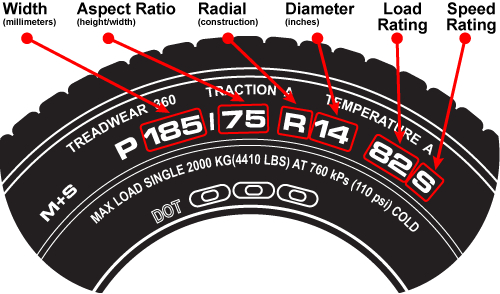Effective Ways to Factor Expressions: Proven Techniques for 2025
Factoring expressions is a foundational skill in algebra that enhances problem-solving abilities and simplifies polynomial equations. Understanding how to factor expressions leads to greater comprehension of algebraic functions and their applications. In 2025, as mathematical education continues to evolve, students and educators alike benefit from updated techniques and strategies to effectively factor various types of expressions, including quadratic and cubic forms.
This article will explore various factoring techniques such as the difference of squares, factoring by grouping, and factoring trinomials. We will delve into practical applications, modern educational resources, and effective strategies for mastering these concepts. Furthermore, we will provide examples and exercises to enhance the understanding of factors, improve algebra skills, and support students in navigating their academic challenges.
By the end of this article, readers will have a comprehensive toolkit for factoring expressions, enabling them to tackle a range of algebraic challenges with confidence and proficiency.
Key Takeaways: Mastering factoring expressions is vital in algebra, providing essential skills for simplifying equations, exploring polynomial identities, and enhancing problem-solving techniques.
Key Techniques for Factoring Algebraic Expressions
Understanding the basics of algebraic factoring is crucial for anyone looking to excel in mathematics. The techniques for factoring expressions revolve around recognizing patterns and applying the appropriate methods to simplify polynomials efficiently. Let’s explore some essential techniques to master the art of factoring.
Common Factor Extraction
The first step in factoring any algebraic expression often involves identifying the greatest common factor (GCF). This technique is the cornerstone of simplifying expressions, where you pull out the highest factor common to all terms. For instance, in the expression 12x^3 + 8x^2, the GCF is 4x^2, leading to the factored form of 4x^2(3x + 2).
Consistent practice in identifying GCFs can greatly enhance one’s understanding of factorization methods. Algebra worksheets often provide excellent exercises to hone this skill through step-by-step factoring examples.
Difference of Squares
The difference of squares is a special case that simplifies the factoring process. This method applies when dealing with expressions in the form of a² - b², which can be factored into (a - b)(a + b). For example, x² - 9 can be factored into (x - 3)(x + 3).
This technique is particularly useful for solving polynomial equations and is a frequent topic in algebra courses. Recognizing when to apply this rule can streamline the process of simplifying complex expressions.
Factoring Trinomials
Factoring trinomials, especially those in the form of ax² + bx + c, requires identifying two numbers that multiply to ac and add to b. This method is essential for reformatting quadratic expressions into simpler products.
For example, to factor 2x² + 5x + 3, one can identify that (2x + 3)(x + 1) satisfies both conditions. As students progress in their factoring skills, mastering this technique becomes increasingly important for solving quadratic equations.
Advanced Factoring Strategies When Simplifying Polynomials
Building upon basic factoring skills, advanced strategies are essential for tackling more complex expressions. Let's discuss some advanced factoring techniques that can greatly enhance understanding and problem-solving capabilities in algebra.
Factoring by Grouping
Factoring by grouping is particularly useful for polynomials with four terms. The process involves dividing the polynomial into two pairs and factoring each pair separately. For instance, in the expression ax + ay + bx + by, grouping gives (a + b)(x + y).
This strategy highlights the importance of recognizing patterns and can be an effective way to simplify equations, especially in polynomial identities and equations with multiple variables.
Difference and Sum of Cubes
Cubic expressions can be factored using the difference and sum of cubes formulas. The difference of cubes formula a³ - b³ can be factored to (a - b)(a² + ab + b²), and the sum of cubes formula a³ + b³ factors to (a + b)(a² - ab + b²). This innovation allows for efficient simplification of cubic expressions, greatly aiding students in high school algebra and beyond.
For example, x³ - 8 can be rewritten as (x - 2)(x² + 2x + 4), showcasing the power of recognizing cubic patterns.
Utilizing Factoring Techniques in Real-World Mathematics
Factoring expressions is not just an academic exercise; it has practical applications in solving equations and modeling real-world scenarios. By understanding how different factoring methods apply to mathematical problems, students can enhance their analytical skills.
Factoring in Solving Polynomial Equations
One of the most direct applications of factoring techniques is in solving polynomial equations. For instance, by factoring a quadratic equation, students can easily determine the roots. Solving x² - 5x + 6 = 0 can be achieved by factoring to (x - 2)(x - 3), leading to roots of x = 2 and x = 3.
This practical application illustrates the importance of mastering factoring as a fundamental skill in mathematics and can be explored through various academic resources, including algebra tutorials and problem sets.
Effectively Using Factoring in Algebraic Simplification
Algebraic simplification often requires using several factoring techniques in conjunction. Understanding how to manipulate and rewrite expressions enables students to approach problems from multiple angles. This skill is particularly valuable in advanced algebra courses and preparation for standardized tests.
For example, simplifying an expression like 4x² - 12x can enhance learning through systematic factorization to identify variables, leading to key solutions and learnings.
Engaging in Practice for Mastery of Factoring Techniques
Practice is crucial for mastering factoring techniques. Engaging with educational resources and exercises can significantly boost confidence and skill level in algebra.
Creating Algebra Worksheets for Skill Development
Educators can enhance learning experiences by developing tailored algebra worksheets that focus on various factoring methods. Incorporating a mix of exercises, including factoring practice problems and simplification tasks, can provide diverse opportunities for students to refine their skills.
Worksheets can range from beginner to advanced levels, addressing different aspects of factorization and aligning with academic standards.
Utilizing Online Tutors and Educational Resources
Additionally, seeking help from online tutors and leveraging educational resources can greatly assist in understanding complex factoring strategies. Interactive learning tools and workshops can provide personalized support and foster a more engaging learning environment.
By integrating various approaches, students can enhance their factoring techniques while enjoying the learning process.
Q&A: Common Questions Regarding Factoring Techniques
1. What is the difference between different factoring techniques?
Different factoring techniques cater to specific forms of polynomial expressions. For instance, extracting common factors is suitable for basic polynomials, while grouping is commonly used for expressions with four terms.
2. How can I improve my factoring skills?
Regular practice through worksheets, engaging in algebra games, and working with tutors can boost your factoring skills. Always familiarize yourself with factoring formulas and identities.
3. What are some common mistakes in factoring?
Common mistakes include misidentifying the GCF, incorrectly applying factoring formulas, and forgetting to check your work. Always review your factored expressions to ensure accuracy.

4. Can factoring be applied to real-world problems?
Yes! Factoring is used in various real-world applications, including physics for motion equations and economics for maximizing profit functions.
5. Where can I find more resources to practice factoring?
There are plenty of online platforms providing algebra practice problems, interactive tutorials, and factorization exercises. Websites that offer algebra worksheets and educational resources can be particularly helpful.

